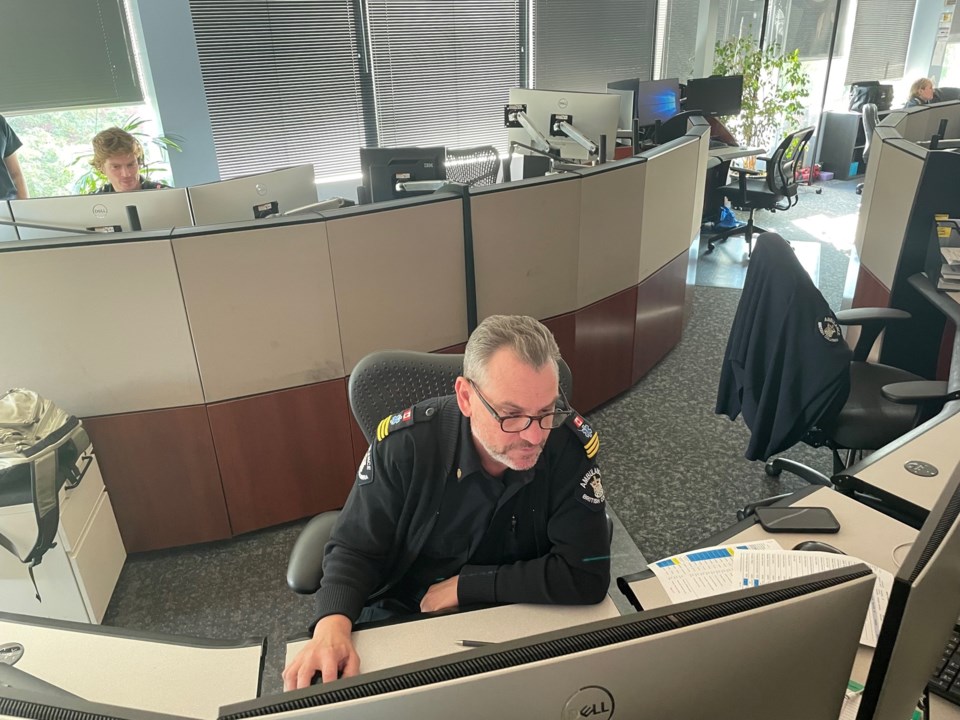When you call 911 for an ambulance, please answer all the questions the call taker poses: this is the message from BC Emergency Health Services (BCEHS).
This includes accurate information about your location — so the ambulance can find you — and your symptoms — so your call can be triaged based on the severity of symptoms.
It might seem like a lot of questions, but the call taker is trying to “paint a picture” of the situation and location of a patient, explained Rachelle Bown, BCEHS public information officer, who worked for 10 years as a dispatcher.
“We like to remind people that you’re going to be asked questions and these questions are very, very important, despite the fact that it could feel stressful when you’re dealing with a medical emergency,” Bown said.
And the volume of questions doesn’t mean that an ambulance is delayed in its response, she added.
“Our (call takers) are only as good as our callers…” she added. “We’re asking you for information and we need people to be honest with us and as forthcoming with exactly what’s going on so that we can properly triage that call and get them the help they need.”
The call taker will keep asking questions with the patient on the line, but as soon as enough information is inputted into the system, a dispatcher will see the level of acuity — colour coded on their computer monitors — and send the first available ambulance to the scene.
“We get a lot of ‘just send the ambulance’ and then they hang up,” Bown said. “They’re not understanding any time you hang up, it delays the process." If someone hangs up, the call taker will have to spend time tracking them down again.
The emergency medical call taker will stay on the line the entire time and give life-saving instructions if necessary, Bown explained, such as, how to use an EpiPen, how to do CPR or stop severe bleeding.
“They are highly trained medical professionals and can walk those callers through absolutely anything to get them where they need to be when they’re waiting for our paramedics,” she said.
There are three dispatch centres — one in Vancouver, the central hub, one in Victoria and one in Kelowna, but the system works provincewide.
They deal with an average of 1,900 calls a day across the province, which adds up to 700,000 a year.
“Our goal with our callers is to have them understand that we’re here to help and get you the help you need,” Bown said.
Colour codes are assigned to the calls — purple for someone who is not breathing or responding, red for serious cardiac issues, and orange for serious medical issues. Lower acuity calls are coded yellow, green and blue.
The colour coding happens based on the information a patient gives to the call taker — which is why it’s important to answer the questions as accurately as possible.
“(Dispatching is) based on the information we’re given by the caller,” Bown said. “For instance, (if someone is) having chest pain… but she tells me she’s having knee pain and doesn’t tell me she’s having chest pain, she’ll be triaged based on her knee pain.”
While sometimes it takes a few hours to get to a call, this is usually because it is lower on the acuity scale. But this doesn’t mean the call has been forgotten, Bown said.
The dispatch centre includes a clinical hub with specialized paramedics who manage lower acuity calls.
Typical lower acuity calls — coded yellow, green and blue — are when the person is "not feeling well," vomiting without breathing difficulties, not severely bleeding or not unconscious. Minor wounds, sprains, mild illnesses are also classified as lower acuity calls.
The clinical hub can help those who don't need a trip to the hospital but might need to go to an urgent and primary care clinic or get mental health support.
During triage, calls are based on the information put into the Clinical Response Model system, which then triages the call — it's never based on someone’s opinion, Bown said.
BCEHS’ goal is to get to purple calls within nine minutes — and Bown said they’re hitting that target.
Location information as critical as symptoms
As critical as information about symptoms is accurate information about the patient's location.
The dispatch centre doesn’t get an exact ping from a cellphone, so an address or the closest intersection or a landmark can help locate a patient.
Bown recalls when she was training to be a dispatcher, her home was filled with maps to learn the geography of B.C.
Sometimes, in rural areas, a description of what car is parked in the driveway can help paramedics find the right house, Bown explained.
Tips when calling 911 for an ambulance
- If you call 911 from a cellphone, emergency medical call takers can’t see your exact location. If you’re calling 911, be prepared to tell the call taker exactly where you are.
- Try to stay calm and speak slowly.
- Ask for an interpreter if you need one and they can get one on the line.
- Answer all the questions and don’t hang up — it can seem like call takers are asking a lot of questions in an emergency, but they’re gathering important information to ensure you get the help you need.
- Try and get right next to the patient if it’s safe to do so.
- if you have a non-urgent medical concern, you can call 811 to speak to a nurse and get health advice 24 hours a day.
Got an opinion on this story or any others in Richmond? Send us a letter or email your thoughts or story tips to [email protected]. To stay updated on Richmond news, sign up for our daily headline newsletter. Words missing in article? Your adblocker might be preventing hyperlinked text from appearing.



